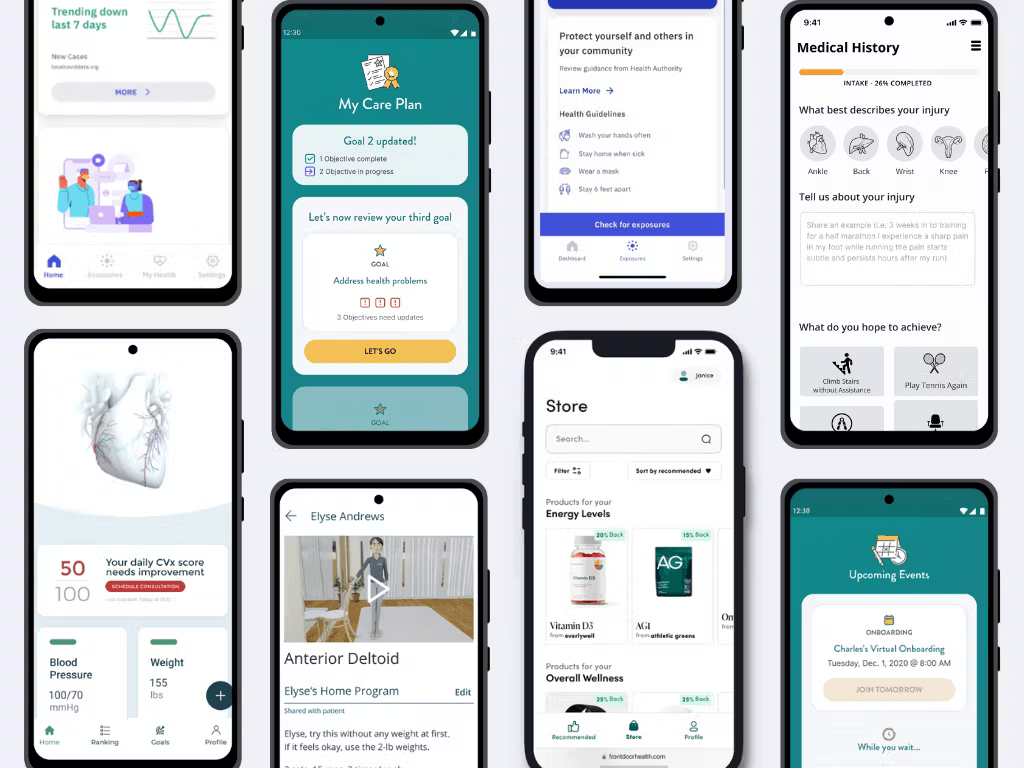
Building inclusive and equitable digital products: The key to improving healthcare access and moving towards health equity
As people creating digital health solutions, we have a moral imperative to work towards achieving equitable healthcare access for all populations.
The COVID-19 pandemic exposed the significant gaps in access to healthcare services, particularly for marginalized and underrepresented populations. As the world becomes increasingly digital, digital healthcare products have the potential to increase access to healthcare services and promote health equity. This can only be achieved through a deliberate and intentional approach to building inclusive and equitable products where inclusion speaks more to who else needs to be included in the product development process. Equity is about meeting the specific needs of folks who would be using the product. We strive for both, but equity is often the goal.
Despite advances in healthcare technology, marginalized populations continue to experience significant disparities in healthcare access and outcomes. According to the Centers for Disease Control and Prevention, people of color are more likely to experience poorer health outcomes and have higher rates of chronic disease. Individuals in rural areas or with low socioeconomic status are more likely to face barriers to healthcare access. To address these disparities, it is necessary to have diverse representation on product teams building digital solutions for the multi-faceted populations we serve.
According to a report by McKinsey & Company, the use of telehealth services grew from 11% of consumers in 2019 to 46% in 2020. This trend toward digital health solutions has highlighted the need for products that cater to various populations’ diverse needs. How do we work towards this?
Inclusive and equitable health tech starts with the product team
We live in a world with diverse cultures, beliefs, and perspectives. It is essential to recognize that diversity should be valued for its practical benefits and because it is the right thing to do.
It is important to acknowledge that diversity should not be viewed simply as a means to an end. Creating a diverse team should be seen as a moral imperative, not just a practical one. Everyone deserves to work in an inclusive and equitable environment that values their unique experiences and perspectives. By valuing diversity for its own sake and working towards equity and inclusion, we can create a work culture built on respect, empathy, and mutual understanding.
Diverse backgrounds, experiences, and viewpoints are also critical for improving access and equity in healthcare solutions. Diversity enables teams to approach problems from multiple perspectives, consider a wider range of solutions, and better understand the needs of different populations. When team members come from different backgrounds and bring these unique perspectives, they can identify gaps in healthcare access and propose more effective solutions. Different communities may have different cultural, linguistic, and socioeconomic needs that must be considered in the user experience.
To build and empower diverse teams, fostering a culture of equity, inclusion, and continuous improvement is essential. Key components include Inclusive hiring practices, employee training and education, and fostering an environment where all employees feel valued and heard. But it is also important to provide an environment to learn, to try and fail, and to give and receive feedback. This is why some say DEI is a verb. It is doing, learning, falling, and getting back up.
Building an inclusive team is only the first step.
Human-centered design for health tech
An inclusive design strategy is critical for creating digital healthcare solutions that meet the needs of all users. Human-centered design thinking is a methodology that puts the user at the center of the design process. It involves empathizing with users, defining their needs, ideating solutions, prototyping, testing, and implementing the final product. This approach ensures that digital healthcare products are designed with inclusivity in mind and can meet the diverse needs of all users.
One way to ensure the user’s needs are met is by involving users in the design process. Engaging users from underrepresented and marginalized communities ensure their perspectives are represented in the design process. This can be done through focus groups, user testing, or other methods of direct engagement. By involving users in the design process, designers can identify potential barriers to healthcare access and develop solutions tailored to all users’ needs.
We have identified best practices for incorporating a human-centered design approach through our work with healthcare organizations to design and develop quality and meaningful digital health solutions. One recent example of this design approach resulted in a focus on user reading level.
Through user testing, our team uncovered that many in the target user population speak English as a second language. We also learned that many were coming to the website in a charged emotional state, impacting one’s ability to process information. By optimizing for simple and clear language, we improved the accessibility of the solution, which increased usability and adoption.
Accessibility is paramount when designing digital healthcare products. This includes ensuring that products are usable for individuals with disabilities and that content is available in multiple languages. When designing products for healthcare, designers must consider the diverse needs of all users, including those with limited access to technology or who may require additional support to navigate digital platforms.
Building inclusive digital healthcare products is essential for improving healthcare access and promoting health equity. Creating an inclusive company culture and employing human-centered design thinking are critical steps to ensure that digital healthcare products meet the needs of all users. With an intentional and inclusive approach to product development, we can work towards a future where healthcare services are for all.
Lindsey Christensen, Marketing Lead, thoughtbot
Thoughtbot is a consultancy that works with healthcare organizations across fields to design and develop quality and meaningful digital health solutions with a human-centered design approach. For 20 years, thoughtbot has partnered on successful products with innovative health tech leaders whether they are medical professionals with their first app idea, high growth VC-backed startups, enterprise healthcare service providers, or in the non-profit sector.




